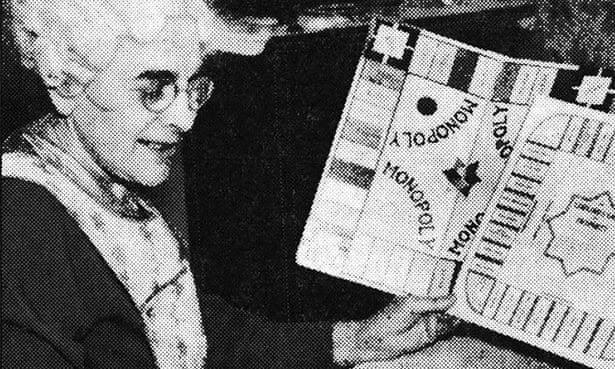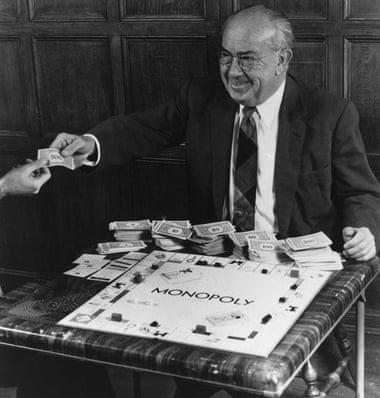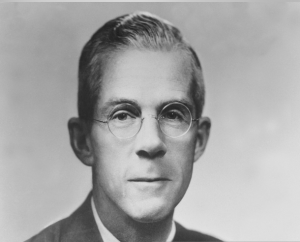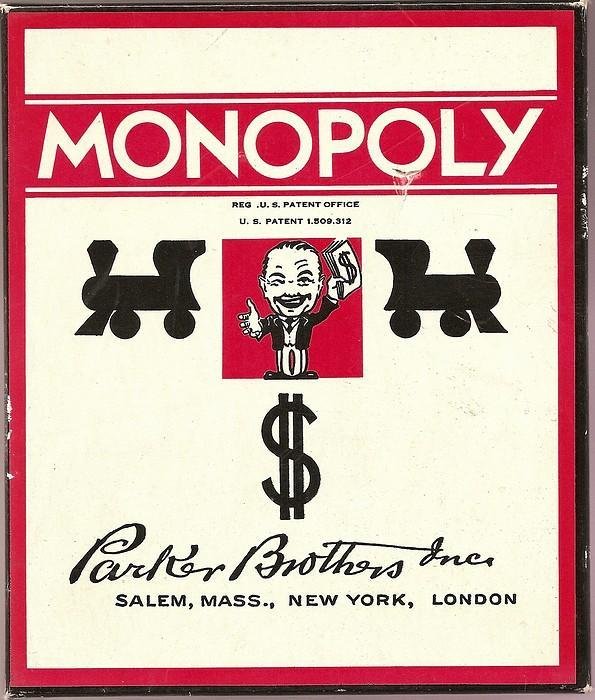The History of Board Games: Monopoly
The History of Board Games: Monopoly
Shrouded in myth, mystery, and a fair bit of deceit, Monopoly is probably the world’s most recognized board game. And while it’s modern history as a beloved traditional board game is well known, the first 30 years of Monopoly’s existence is one of almost complete disinterest. It wasn’t until a dinner party 30 years after it’s invention that Monopoly rolled its way into American culture.

Lizzy Magie (1866-1948) was someone who abhorred monopolies. Unmarried and a political activist, she wanted a way to get her message to the people. She believed in a single tax theory and wanted to design a tool to explain and teach the theory. So in 1903 she created The Landlord’s Game as a way to show the devastating economic impact monopolies had on a citizen and the economy.
The board has places to sleep and pay rent. It had a public park, a poor house, and public utilities for water and light. Players earned wages for labor as they travelled the square layout, and if they made it all the way around, they passed the mother earth square and were awarded $100 for their labors.
She designed two sets of rules for the game. One was altruistic in which all players were rewarded when wealth was created. The second set of rules were designed so the goal was to create monopolies and crush your opponents. Satisfied with the results, Magie filed a patent for the game in March of 1903. Magie kept improving the game and actually refiled a new patent in 1923.
The game was not a huge success by any means, but it did grab the fancy of many left wing activists, collegians, and strangely a Quaker community in Atlantic City that modified the board to include the names of local streets. And if not for a random dinner party in Philadelphia some 10 years later, The Landlord’s Game would have probably been lost to history.

The dinner party was hosted by Charles Todd of Philadelphia in 1932. Attending the party was Charles Darrow and his wife Esther. At the gathering, Darrow had the opportunity to play The Landlord’s Game and enjoyed it immensely. A few days later he asked for a set of the rules, and went about designing/redesigning/plagiarizing the game and creating the first version of Monopoly. Darrow’s major contribution to the game was the name Monopoly and the modernization of some of the square names/concepts that weren’t as appealing to the public 30 years after the game was invented.
![]()
Darrow, being much better connected than Magie, found a way to get Parker Brothers interested in his version of Monopoly. In 1935 Darrow patented Monopoly and Parker Brothers agreed to produce it. However a sticking point arose when Parker Brothers asked about and investigated the history of Darrow’s invention. It didn’t take long to connect the dots. Parker Brothers realized Monopoly was a knock off of The Landlord’s Game so they contacted Magie and bought the rights to her patent for $500. The deal included no royalties for Magie.
The Greatest Game Ever Played
On November 27 1961, a monopoly game started on an ordinary Monday inside a fraternity house at the University of Pittsburgh. Four students began a game, but at some point decided to team up and combine resources. This seemingly innocuous move, set off a wild 5 day marathon that at one point required an emergency transfer of over $1,000,000 in cash.
By teaming up, the frat brothers had almost perfectly balanced the game. Both teams had the same relative value of properties, rents, and cash reserves. Because they had played as individuals before teaming up, each brought significant cash to the partnerships along with the properties.
The game entered a strange stalemate in which both partnerships were continually adding assets and cash each time around the board. Neither team would back down or quit, so the game went on. And on. And on. Friends and other frat brothers were drafted in to keep playing while the original four players went to class, ate, slept, etc. By this time the game had made a bit of local news. On Tuesday the local news station sent a reporter out to verify the game was still going on.
By Wednesday, the game was in peril. In essence, their 4 person economy had too much cash in circulation and the bank did not have enough to keep allowing/paying withdraws. The bank was going to run out of money. Nothing in the rules covered this possibility so the frat guys wired Parker Brothers and informed them of the quandary. As the bank was about to collapse, word got to Parker Brothers. Robert Barton, President of Parker Brothers, sent the following message back,
 Robert Barton - “Refuse to let the bank fail. Rushing one million Monopoly dollars to you by airmail — carry on.”
Robert Barton - “Refuse to let the bank fail. Rushing one million Monopoly dollars to you by airmail — carry on.”
The players agreed to lend the bank money until the cash reserves arrived. $1,000,000 in Monopoly money was flown overnight from Parker Brothers to the Pittsburgh Airport where it was picked up by a Brinks truck and delivered to the frat house on Thursday night by which point the bank had been broken a second time. However with the $1,000,000 cash infusion, the game could go on. And it did.
By Friday, economic professors were telling students to go watch the Monopoly game to observe an economy with too much cash in circulation. The game could seemingly go on forever, but with finals and the end of the semester approaching, something had to be done. By mutual agreement the game was ended on Saturday Dec 2, 1961. The final score
Eddie Leeds, Howard Finkel $146,000 vs Allen Paulenoff and Sherman Fogel $133,000
Old Monopoly editions came with $15,140. The frat brothers would have needed 19 copies of Monopoly to have enough money to account for their $279,000 in combined assets.
MONOPOLY BY THE NUMBERS
- Through 2015 Monopoly had sold over 275 million copies.
- Hasbro, the current owners, print over $30 billion dollars worth of Monopoly money every year, and there is more than $3 trillion Monopoly dollars in circulation.
- Monopoly is played in 47 languages and 114 countries.
- The Battleship, Race Car, & Top Hat are the only 3 player tokens to appear in every version of Monopoly ever produced.
- The best color monopoly to own are the orange squares. This is due to the increased traffic on that row of the board due to jail releases and the go to St James Place card. The orange squares are the common rolls(5,6,7,8,9) away from both St James Place and Jail squares.
- The Patent for the Landlords Game and The Wright Bros Plane were filed on the same day,. March 23, 1903.
REFERENCES
https://en.wikipedia.org/wiki/Monopoly_(game)
https://pittnews.com/article/13293/archives/225-way-past-go-the-marathon-monopoly-game/

